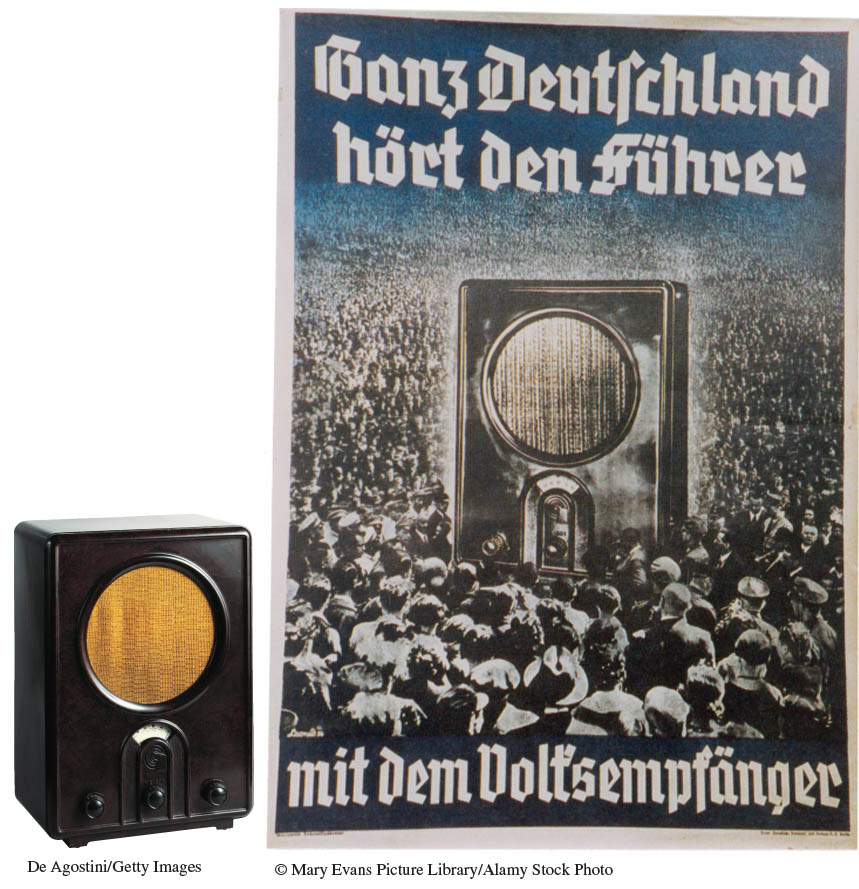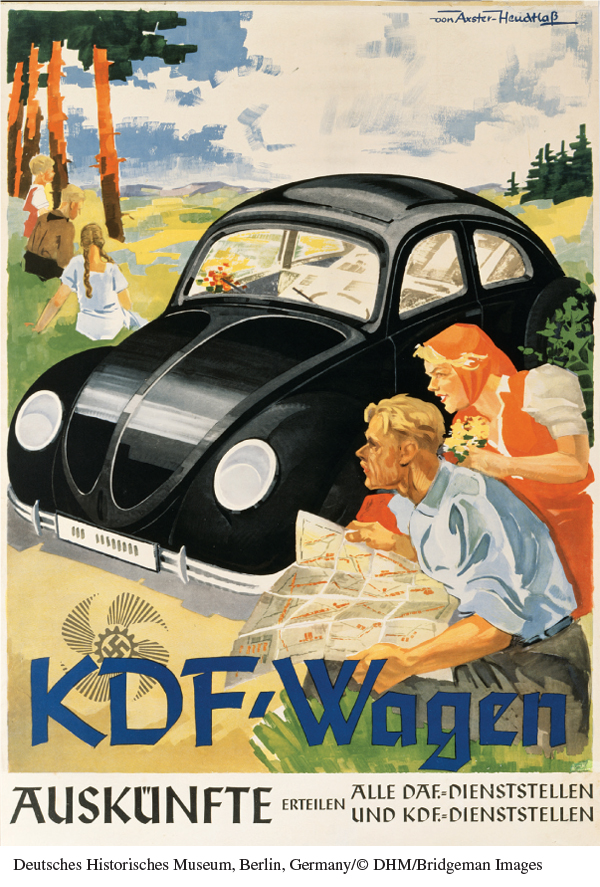A History of Western Society: Printed Page 924
Living in the Past
Nazi Propaganda and Consumer Goods
I t is easy to forget that the Volkswagens that zip around America’s streets today got their start in Hitler’s Germany, introduced as part of a Nazi campaign to provide inexpensive but attractive consumer goods to the Volk (people). Marketed to Aryans, but not to Jews and other “racial enemies,” the Volkswagen (or People’s Car) and other People’s Products, including the People’s Radio, the People’s Refrigerator, and even the People’s Single-

Despite Hitler’s promise of a “new, happier age” that would “make the German people rich,”* many of these consumer goods remained out of reach of ordinary Germans. The Volkswagen was a case in point. The car was sold by subscription, and a purchaser made weekly deposits into a savings account. When the balance was paid off, the customer would receive a car. By 1939 some 340,000 Germans had opened such savings accounts. Yet because of problems with production, the car’s relatively high price, and the concentration on armament production in the late 1930s, not one People’s Car was delivered to a private customer.
In contrast, the People’s Radio was a unique success. The modest VE-

QUESTIONS FOR ANALYSIS
- What do these images suggest about everyday life in Nazi Germany? What do they reveal about the aspirations of the German people for a good life in the 1930s?
- Consider why both the government and commercial manufacturers attached the prefix Volk, or “people,” to products like the Volkswagen. What larger message did these two groups seek to convey through the use of this prefix?
- How are these images similar to advertisements today? How are they different?